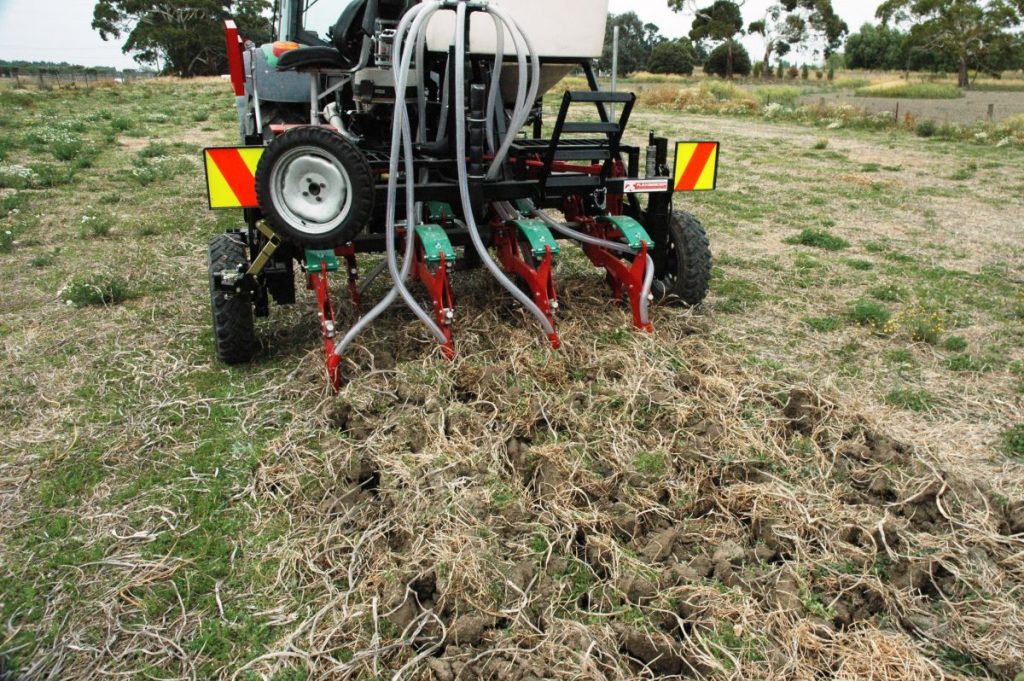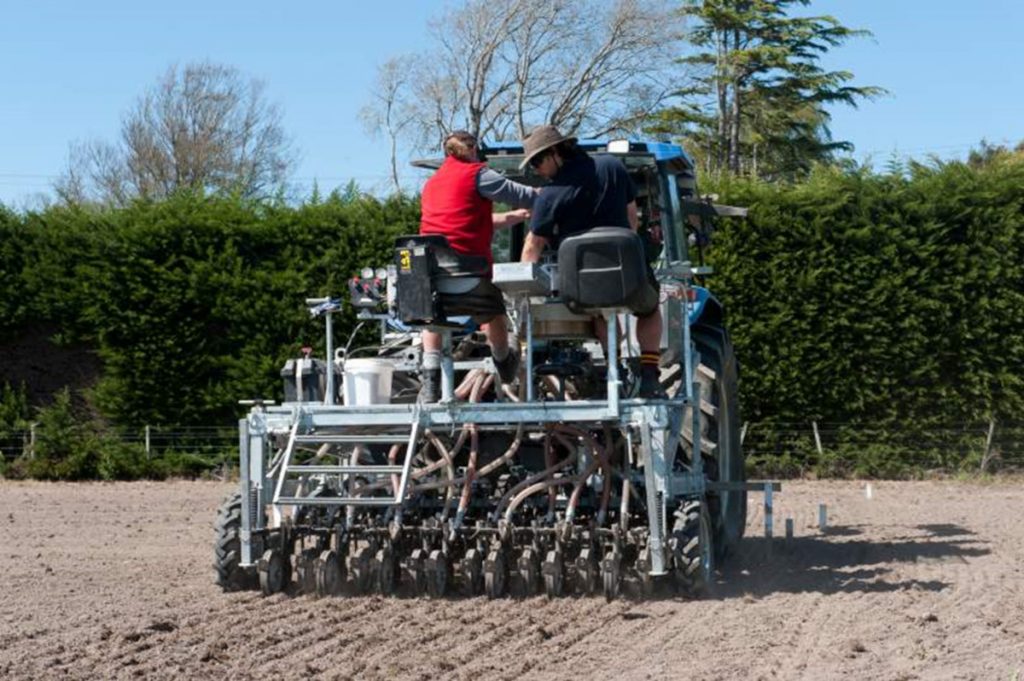Learn about the development of the new Flexiseeder plot drill and Flexiseeder Limeblower at Lincoln University.
This project is conducted in association with Flexiseeder Ltd, Lincoln University, Geoff Gray Ltd, The Seed and Mechanisation Development Trust (SEMEC) and in collaboration with Torbjörn Leuchovius at the Swedish University of Agricultural Sciences Field Research Unit. The project has led to the development of a drill suitable for both conventional cultivation or direct drilling and incorporates a range of new technologies into one machine.

New Flexiseeder plot drill at the Field Service Centre
Lincoln University is the proud owner of state of the art plot seeder drilling equipment. In collaboration Flexiseeder Ltd, a small NZ owned world leader in the design and manufacture of such equipment together with a Christchurch engineering firm Geoff Gray Ltd, the final hurdles have been crossed and the drill has been commissioned by our technicians at the Field Service Centre.
The FSC technicians Dave Jack and Dan Dash are well into sowing this season’s pasture and crop experiments with the new drill fitted with Flexiseeder hoe coulters. They and the designer-manufacturer Flexiseeder principle Dr John Stevens (Lincoln alumnus of 30 years ago) are very happy with the results. Flexiseeder disc coulter options are available.

This drill, which can be used on cultivated ground or direct drilling, incorporates a number of unique Flexiseeder technologies that have been developed, and brought into commercial production in NZ through the ad hoc Nordic-NZ end-user group formed and lead by John. He and his Nordic counterpart Torbjörn Leuchovius have drawn on 60 years combined applied professional work in agronomy to fit it all together.
John’s relationship with Europe goes back many years. This initiative was conceived, and developed by John and Torbjörn on the basis of global agro ecological overlap which underpins the out of season seed industry in NZ. Since 2007, Flexiseeder Ltd has built and exported 10 complete drills to Sweden, and one each to Norway and Switzerland; plus air, product metering and coulter modules to Norway, Denmark and Germany for inclusion on other world renowned brands.
The new technologies found on the Flexiseeder were developed for plot drills and some elements are already being integrated into to broad acre machinery under the Flexiseeder brand, the new Duncan tyne drill for example.
The core focus has been to develop combined fertiliser and seed sowing plot machinery that is comparable to farm equipment, equally suited for traditional cultivation on good soils as well as heavy clay and other difficult soils including reduced and zero tillage on flat as well as hill country. The three big steps forward are the air feed systems for even seed delivery and the pulsed seed calibration technology for seeding rate times distance replacing manual drives with electric/digital drives of portion feeds including continuous sowing. The design allows these modules to be placed anywhere on the machine. The third innovation are the tips, tynes or coulters and alternatively a disc design requiring less than normal down pressure using available machine weight; simple but very effective. Previously, this equipment was lacking as a combined package.
“Flexi” and “modular” are the operative words for the design. The frame configuration could be called somewhat ubiquitous but what you hang off it, or attach to it, is state of the art. The frame, coulter, air and continuous feed configuration also forms the basis of farm machines, including gull wing designs.
As overlays to these technologies, the drill has been designed to do other “things” that will offer plenty of collaborative project topics. It can sow three species at the same time but through three independent delivery tubes. Two species can be sown in one drill row while the other can be sown in the alternate row alongside if required. One of three delivery tubes can deliver fertiliser while sowing and delivering the fertiliser below, to the side or behind the seed.
There are a few more tricks as well but the basics will do for now. As projects are put up and funding comes forward the “bells and whistles” can be added; discs for example.
This collaboration came about back in 2012 when Prof Derrick Moot, in discussion with John Stevens and Prof John Hampton through SEMEC, set a specification for the new drill to replace an old Oyjord machine specially built for the university in 1977 and which was still in operation up to last year at the FSC (Lincoln University Field Service Centre).
Derrick’s wish list was for something slightly out of the ordinary for a conventional plot drill. The drill had to be configured in such a way that it could be used installing experimental designed pastures and crops in conventional cultivated ground to a very high specification of depth and spacing or evenness, as well and with little adjustment, could do the same but direct drill seed into uncultivated ground.
The obvious reason from Derrick’s point of view was the introduction of lucerne and other legumes in the NZ hill country situation where cultivation is expensive. NZ Hill country is the last great development area for pastoral farming as we know it.
